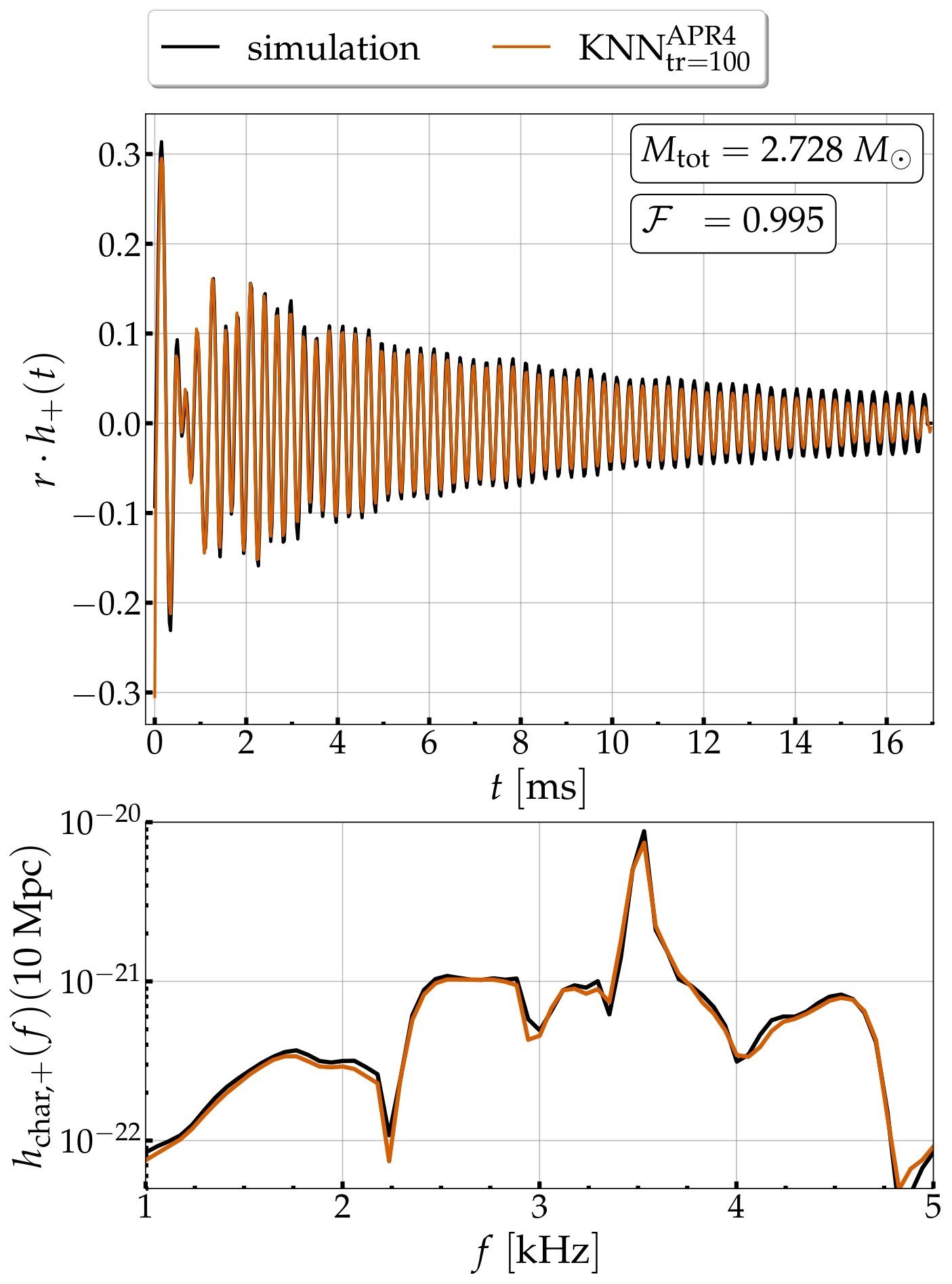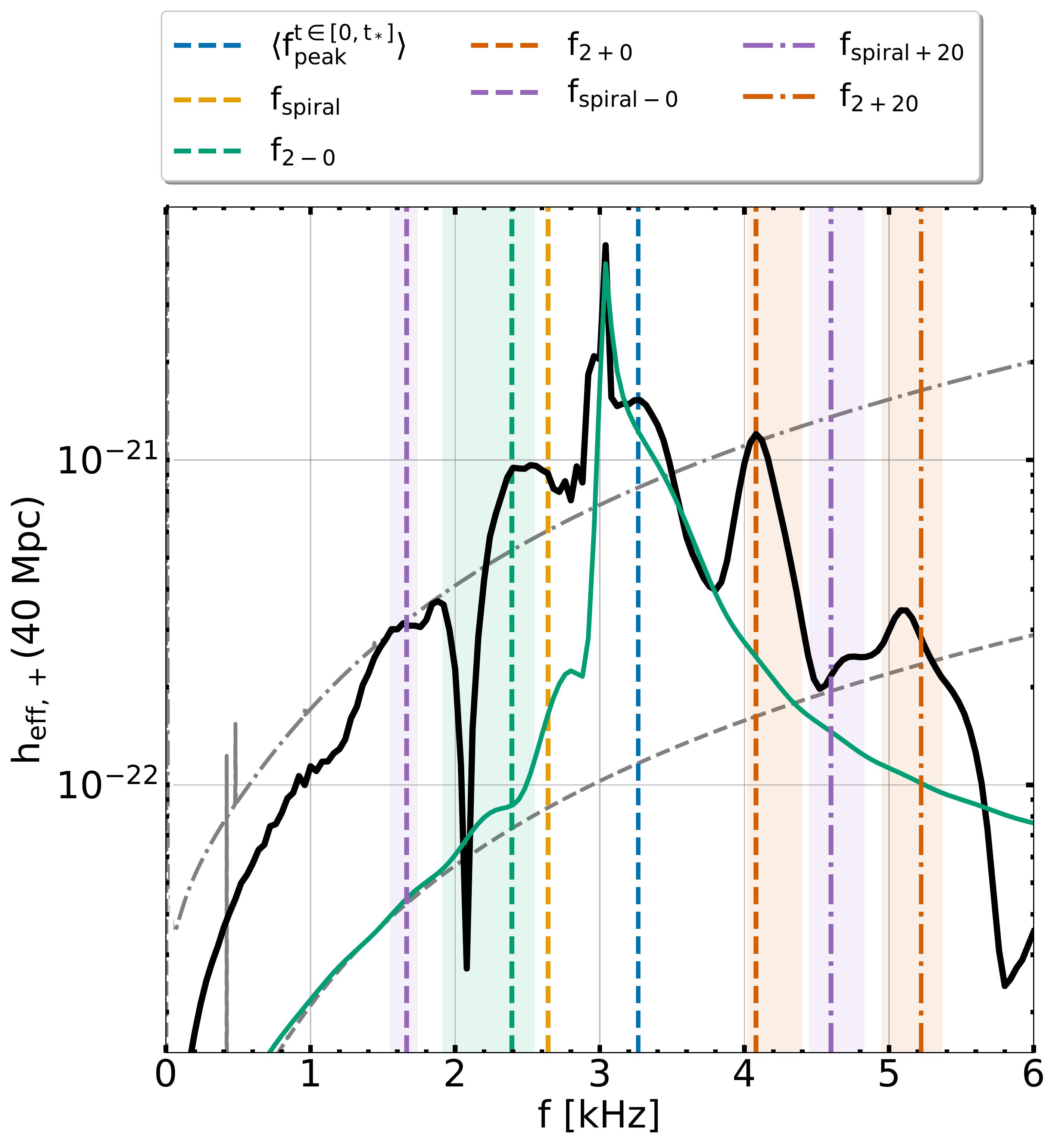Gravitational-wave model for neutron star merger remnants
with supervised learning (Preprint)
We present a time-domain model for the gravitational waves emitted by equal-mass binary neutron star merger remnants for a fixed equation of state. We construct a large set of numerical relativity simulations for a single equation of state consistent with current constraints, totaling 157 equal-mass binary neutron star merger configurations. The gravitational-wave model is constructed using the supervised learning method of K-nearest neighbor regression. As a first step toward developing a general model with supervised learning methods that accounts for the dependencies on equation of state and the binary masses of the system, we explore the impact of the size of the dataset on the model. We assess the accuracy of the model for a varied dataset size and number density in total binary mass. Specifically, we consider five training sets of {20,40,60,80,100} simulations uniformly distributed in total binary mass. We evaluate the resulting models in terms of faithfulness using a test set of 30 additional simulations that are not used during training and which are equidistantly spaced in total binary mass. The models achieve faithfulness with maximum values in the range of 0.980 to 0.995. We assess our models simulating signals observed by the three-detector network of Advanced LIGO-Virgo. We find that all models with training sets of size equal to or larger than 40 achieve an unbiased measurement of the main gravitational-wave frequency. We confirm that our results do not depend qualitatively on the choice of the (fixed) equation of state. We conclude that training sets, with a minimum size of 40 simulations, or a number density of approximately 11 simulations per 0.1 Msun of total binary mass, suffice for the construction of faithful templates for the post-merger signal for a single equation of state and equal-mass binaries (abbreviated).
[Abstract taken from (DOI)]

Analytic models of the spectral properties of gravitational waves from neutron star merger remnants (Phys. Rev. D)
We present a new analytic model describing gravitational-wave emission in the postmerger phase of binary neutron star mergers. The model is described by a number of physical parameters that are related to various oscillation modes, quasilinear combination tones or nonlinear features that appear in the postmerger phase. The time evolution of the main postmerger frequency peak is taken into account and it is described by a two-segment linear expression. The effectiveness of the model, in terms of the fitting factor or, equivalently, the reduction in the detection rate, is evaluated along a sequence of equal-mass simulations of varying mass. We find that all parameters of the analytic model correlate with the total binary mass of the system. For high masses, we identify new spectral features originating from the nonlinear coupling between the quasiradial oscillation and the antipodal tidal deformation, the inclusion of which significantly improves the fitting factors achieved by the model. We can thus model the postmerger gravitational-wave emission with an analytic model that achieves high fitting factors for a wide range of total binary masses. Our model can be used for the detection and parameter estimation of the postmerger phase in upcoming searches with upgraded second-generation detectors, such as aLIGO+ and aVirgo+, with future, third-generation detectors (Einstein Telescope and Cosmic Explorer) or with dedicated, high-frequency detectors.
[Abstract taken from (DOI)]

List of Publications
- T. Soultanis, K. Maltsev, A. Bauswein, K. Chatziioannou, F. K. Roepke, and N. Stergioulas, “Gravitational-wave model for neutron star merger remnants with supervised learning,” arXiv e-prints, p. arXiv:2405.09513, May 2024.
- T. Soultanis, A. Bauswein, and N. Stergioulas, "Analytic models of the spectral properties of gravitational waves from neutron star merger remnants", Phys. Rev. D, Feb 2022.
- G. Lioutas, A. Bauswein, T. Soultanis, R. Pakmor, V. Springel, and F. K. Roepke, "General relativistic moving-mesh hydrodynamics simulations with AREPO and applications to neutron star mergers, arXiv e-prints, p. arXiv:2208.04267, Aug. 2022.
- C.E. Collins, L.J. Shingles, A. Bauswein, S. A. Sim, T. Soultanis, V. Vijayan, A. Floers, O. Just, G. Leck, G. Martinez-Pinedo, A. Sneppen, D. Watson, and Z. Xiong, "Towards inferring the geometry of kilonovae", arXiv e-prints, p. arXiv:\\2309.05579, Sept. 2023.
- O. Just, V. Vijayan, Z. Xiong, S. Goriely, T. Soultanis, A. Bauswein, J. Guilet, H.-T. Janka, and G. Martínez-Pinedo, "End-to-end kilonova models of neutron star mergers with delayed black hole formation," The Astrophysical Journal Letters, vol. 951, p. L12, jul 2023.
- J. Moran-Fraile, F. R. N. Schneider, F. K. Roepke, S. T. Ohlmann, R. Pakmor, T. Soultanis, and A. Bauswein, "Gravitational wave emission from dynamical stellar interactions", Astron. Astrophys., vol. 672, p. A9, Apr. 2023.
- A. W. Criswell, J. Miller, N. Woldemariam, T. Soultanis, A. Bauswein, K. Chatziioannou, M. W. Coughlin, G. Jones, and V. Mandic, "Hierarchical bayesian method for constraining the neutron star equation of state with an ensemble of binary neutron star postmerger remnants", Phys. Rev. D, vol. 107, p. 043021, Feb 2023.
- A. Bauswein, S. Blacker, G. Lioutas, T. Soultanis, V. Vijayan, and N. Stergioulas, “Systematics of prompt black-hole formation in neutron star mergers,” Phys. Rev. D, vol. 103, p. 123004, Jun 2021.
- S. Blacker, N.-U. F. Bastian, A. Bauswein, D. B. Blaschke, T. Fischer, M. Oertel, T. Soultanis, and S. Typel, “Constraining the onset density of the hadron-quark phase transition with gravitational-wave observations,” Phys. Rev. D, vol. 102, p. 123023, Dec 2020.